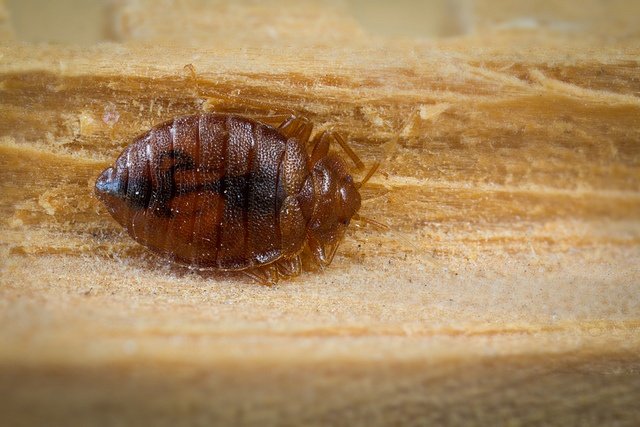Fill out the form below and a Cypress Creek representative will be in touch with you about your pest control needs.
BLOG

Good Night, Sleep Tight and Don’t Let the Bed Bugs Bite!
Nothing is more disturbing than the thought of bed bugs crawling in your bed while you’re asleep. It’s the stuff horror films are made of!
And while these miniscule nusiances are considered a public health pest by the Environmental Protection Agency (EPA), the Centers for Disease Control and Protection (CDC) and the United States Department of Agriculture (USDA), they are not known to transmit or spread disease. However, they can cause other public health issues.
Bed bugs are excellent hitchhikers. They may enter your house undetected through luggage, clothing, used couches and other items. Their flattened bodies make it possible for them to fit into tiny spaces, about the width of a credit card. Bed bugs do not have nests like ants or bees, but tend to live in groups in hiding places. Their initial hiding places are typically mattresses, box springs, bed frames, and headboards, where they have easy access to people to bite in the night.
Most bed bug bites are painless at first, but later turn into itchy welts. Unlike flea bites that appear mainly around the ankles, bedbug bites can show on any area of skin exposed while sleeping. Also, the bites do not have a red spot in the center like flea bites do.
People who don’t realize they have a bedbug infestation may attribute the itching and welts to other causes, such as mosquitoes. To ascertain you have bed bug bites, you must find and identify the bugs themselves. These tiny insects, usually about 4 to 5 millimeters long, often stay hidden and are usually nocturnal, but small black spots indicating bedbug feces or nymphs in mattress seams and other furniture could indicate their presence in your home.
Top misconceptions about bed bugs are:
- MYTH: You can’t see a bed bug. In reality, you should be able to see adult bed bugs, nymohs and eggs with your naked eye.
- MYTH: Bed bugs live in dirty places. They are not attracted to dirt or grime, but to warmth, blood and carbon dioxide.
- MYTH: Bed bugs won’t come out in a brightly lit room. They prefer darkness, but light will not deter these pests from biting you.
- MYTH: Pesticides alone will eliminate bed bug infestations. Bed bug control can only be maintained through a treatment strategy that includes a variety of techniques plus careful attention to monitoring. Proper use of pesticides may be part of the strategy, but will not by itself eliminate bed bugs. In addition, bed bug populations in different areas of the country have developed resistance to the ways many pesticides work to kill pests. If you’re dealing with a resistant population, some products and application methods may not work. It is a good idea to consult a qualified pest management professional if you have bed bugs in your home.
Remember, like most bug and pest problems, bed bugs are easier to treat if they are caught early so it’s a good idea to do periodic inspections in your home. When you take off your sheets to wash them, look for signs of bed bugs. If you do find signs, know that controlling bed bugs takes time and patience. It is not a do-it-yourself project. Contact a pest control company that has experience with bed bugs for help.
Bed bugs biting you? Get an inspection and free estimate today.

